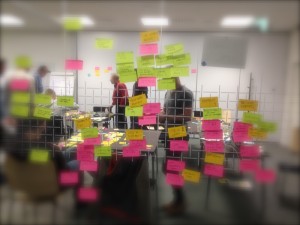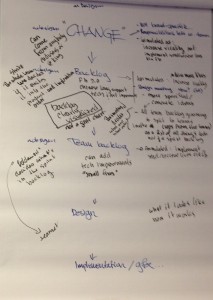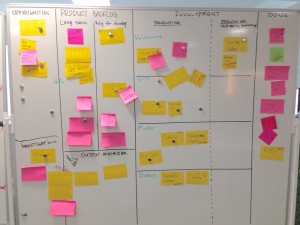 How do you decide what to build next? Who comes up with the ideas? How do you decide in what order to implement them? How do you keep track of what you’re working on, and what you want to work on?
How do you decide what to build next? Who comes up with the ideas? How do you decide in what order to implement them? How do you keep track of what you’re working on, and what you want to work on?
Here’s a behind the scenes look at how the Candy Crush Soda team comes up with ideas and decides what to build next!
Gathering ideas
We get our ideas from a variety of sources, and there’s no shortage of good ideas:
- External game designers These are designers who don’t belong to our game team. We have a lot of people at King, working on the different games, coming up with new ideas. Once these ideas have been tested in another game and proven to be successful they become candidates for implementation in our game. There are also idea concepts that no game has implemented yet, but that are pitched to the games.
- Our own game designers We often add new levels and in-game features to the games, and these are developed iteratively by us.
- Marketing/branding campaigns It’s spring, and King has a spring campaign. We can decide to tag along or not.
- External partner campaigns Google’s birthday? Charity event to raise money for the fight against AIDS? Etc…
- Brain storming sessions with the team The sky’s the limit. What would we like to add to the game? Some of these ideas are so big that they might go into a brand new game altogether, others might be as small as a simple Earth Hour campaign linking to earthhour.org’s website from the Facebook game page.
- Outcome from previous features We’ve implemented something, and the results show that we can expand on it, improve it or make something new altogether.
Sorting and selecting
 New ideas roll in all the time, so we need a way to decide which things are in, and which are out. The whole team is involved in this process. We decide together what we want to do and when. The team owns the product!
New ideas roll in all the time, so we need a way to decide which things are in, and which are out. The whole team is involved in this process. We decide together what we want to do and when. The team owns the product!
We visualize what we want to work on using a whiteboard. All ideas first go to the “incoming” area. We then hold biweekly go/no go meetings where the person who is sponsoring the idea presents why we should do it. All features are up for discussion, even company-wide strategic features. After the discussion the idea goes to one of four areas on the board:
- Long term backlog If everybody’s on board, but we can’t really start working on it right away, it might be a good candidate within a few sprints.
- Ready for development It’s a great idea and we should start it as soon as possible.
- Investigate Questions were raised during the pitch phase and we need more information to decide.
- Output minimizer This is not an idea that we’ll be doing in the foreseeable future. It doesn’t mean that it’s not a good idea, and we might change our minds, but it’s longer than long term.
 Using a whiteboard helps us limit the amount of ideas that are under consideration.
Using a whiteboard helps us limit the amount of ideas that are under consideration.
Our next step is to have a backlog refinement meeting where we decide which ideas should go to which sub-teams. The sub-teams then take these ideas to their planning meetings and decide which ones they can start working on now. Some ideas can be implemented and completed within a sprint, others are larger and need to be iterated on and can take several sprints to implement.
Finally, we follow up on the implementations. Do we need to tweak the feature? Did we get the outcome we expected? Should we implement similar features in the future?
Our board is good at visualizing what we’re working on and what we want to work on, but as with everything, both the board and the process are a work in progress. This just happens to be how we work today.
(Curious about how the game was developed? You can read more here!)
Get in touch via my homepage if you have questions or comments!



